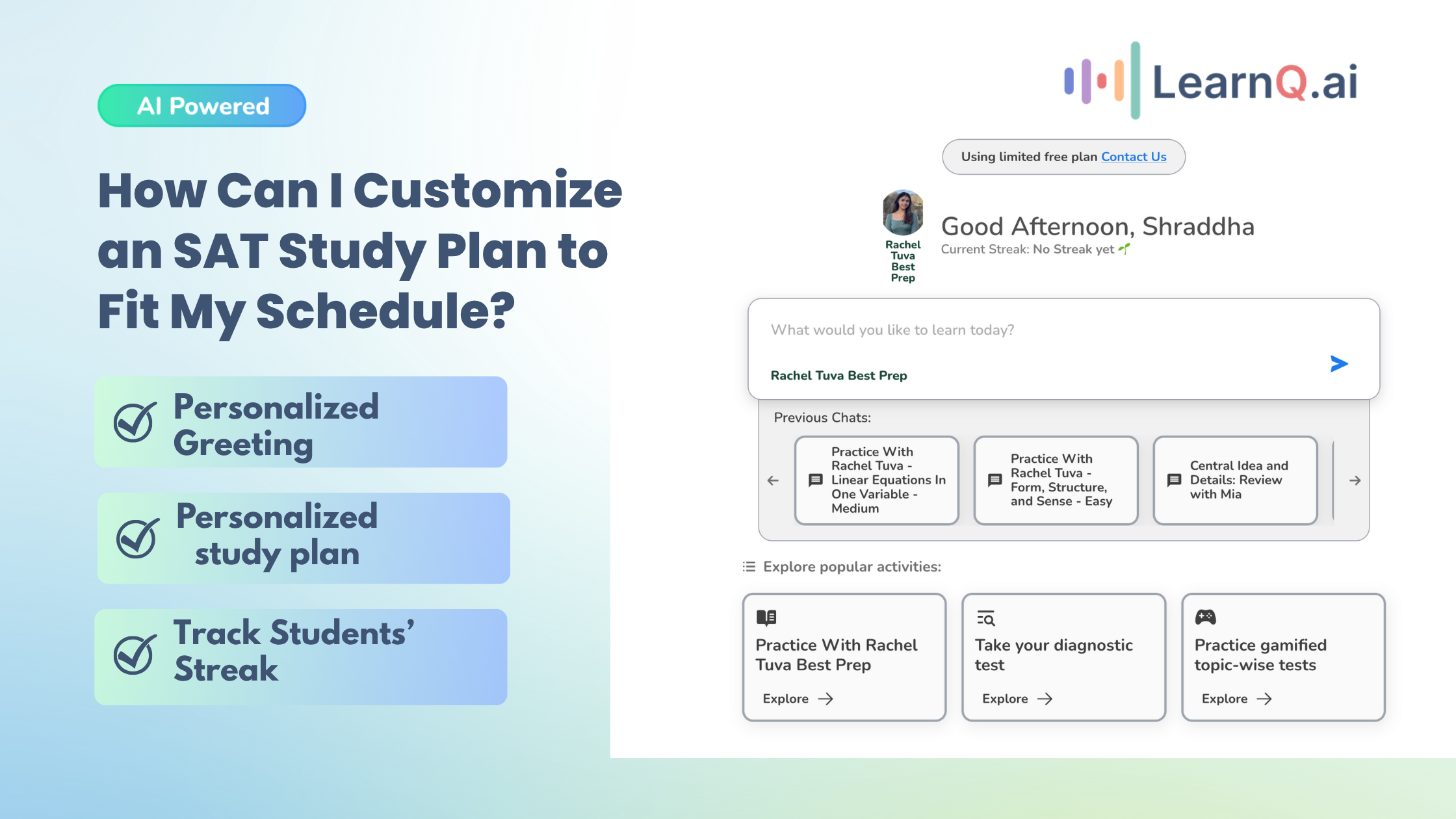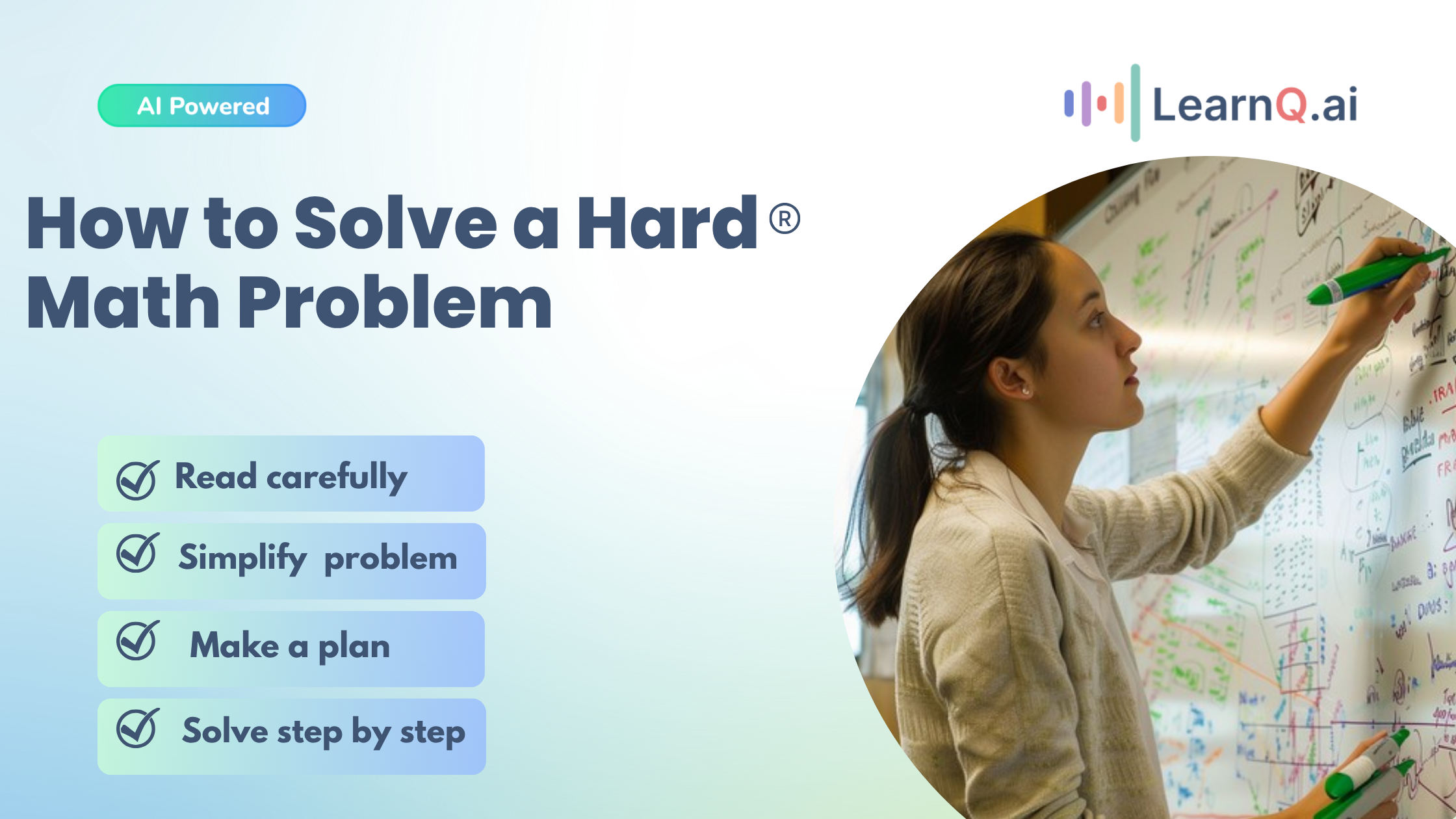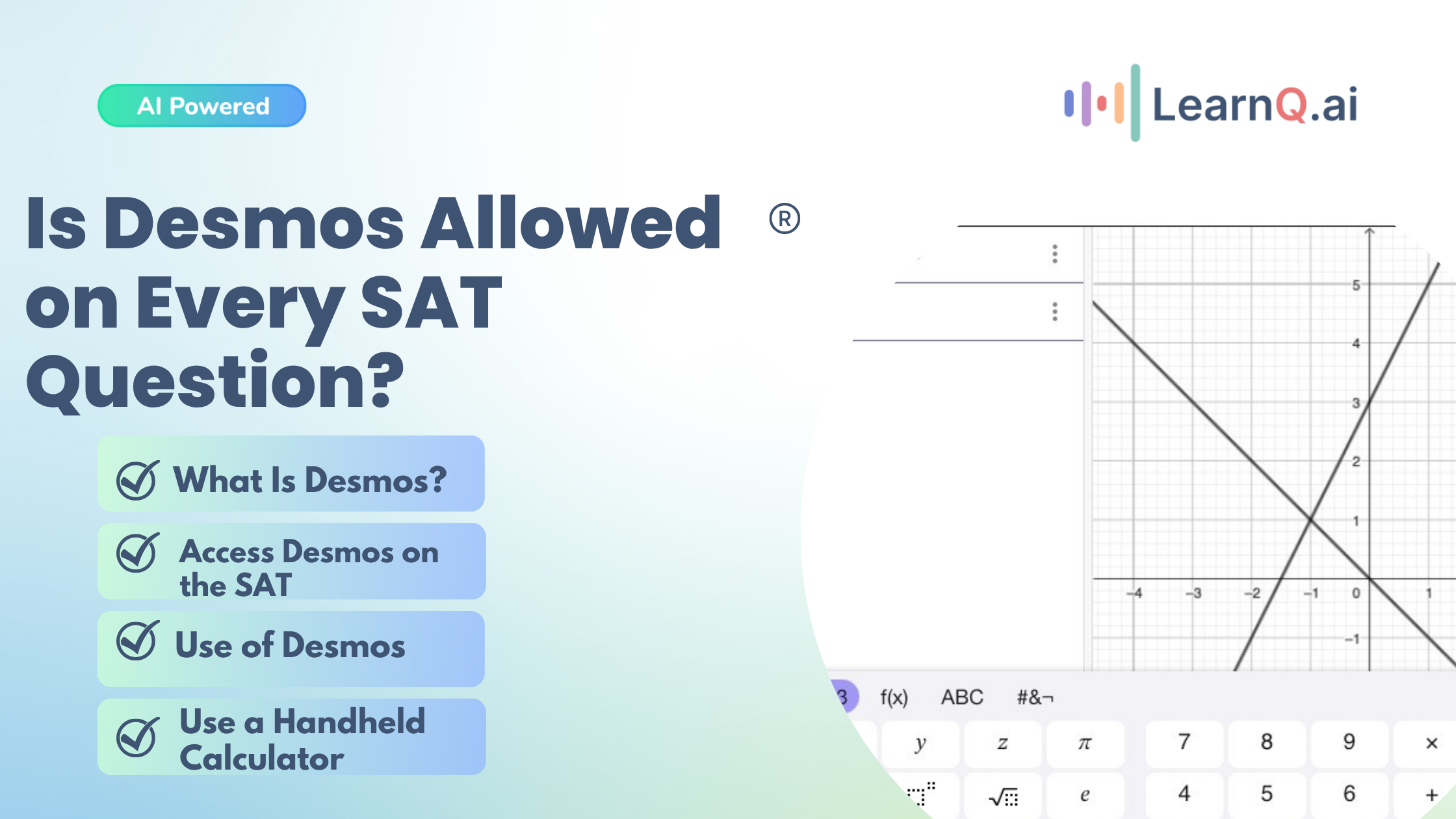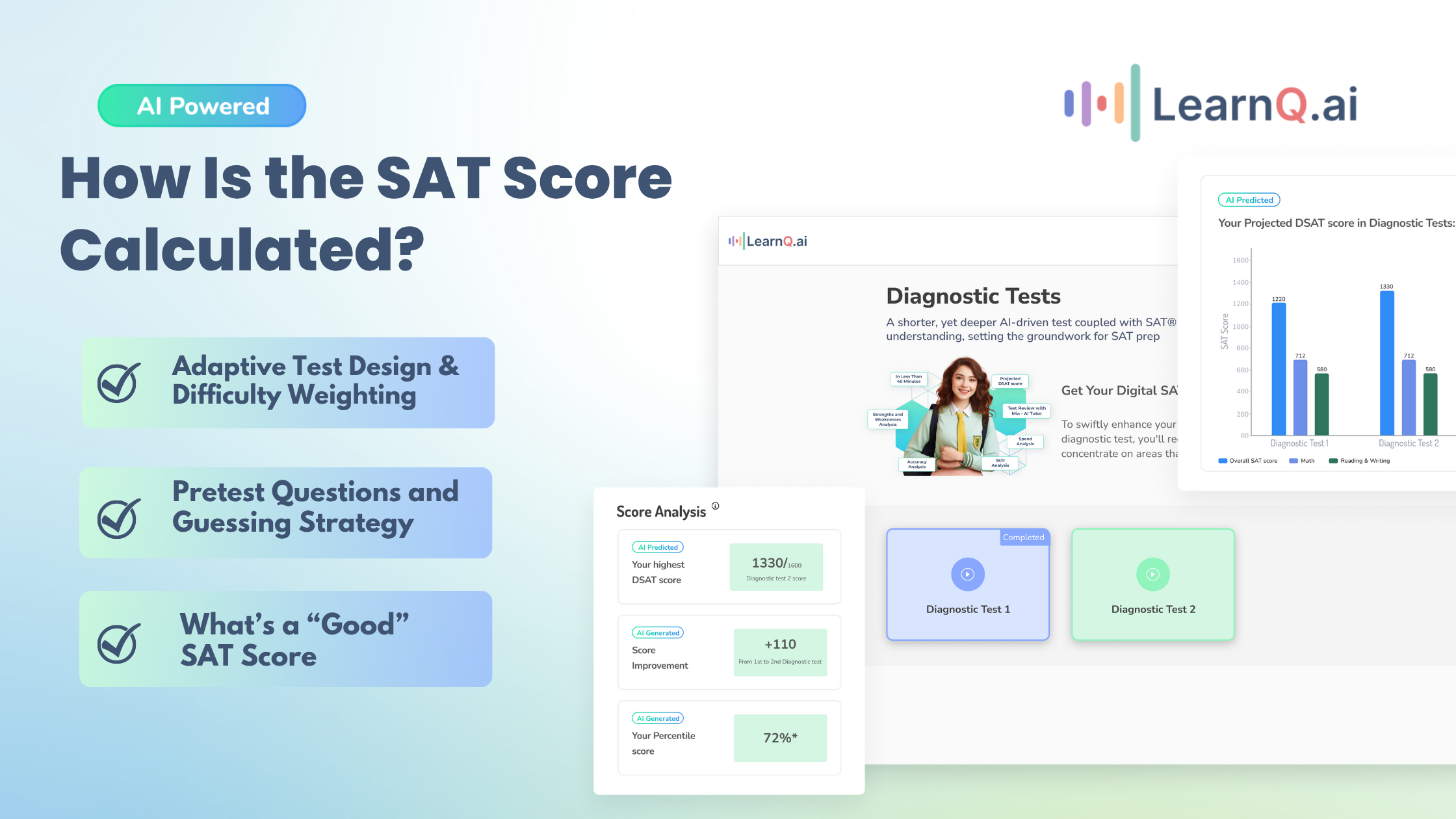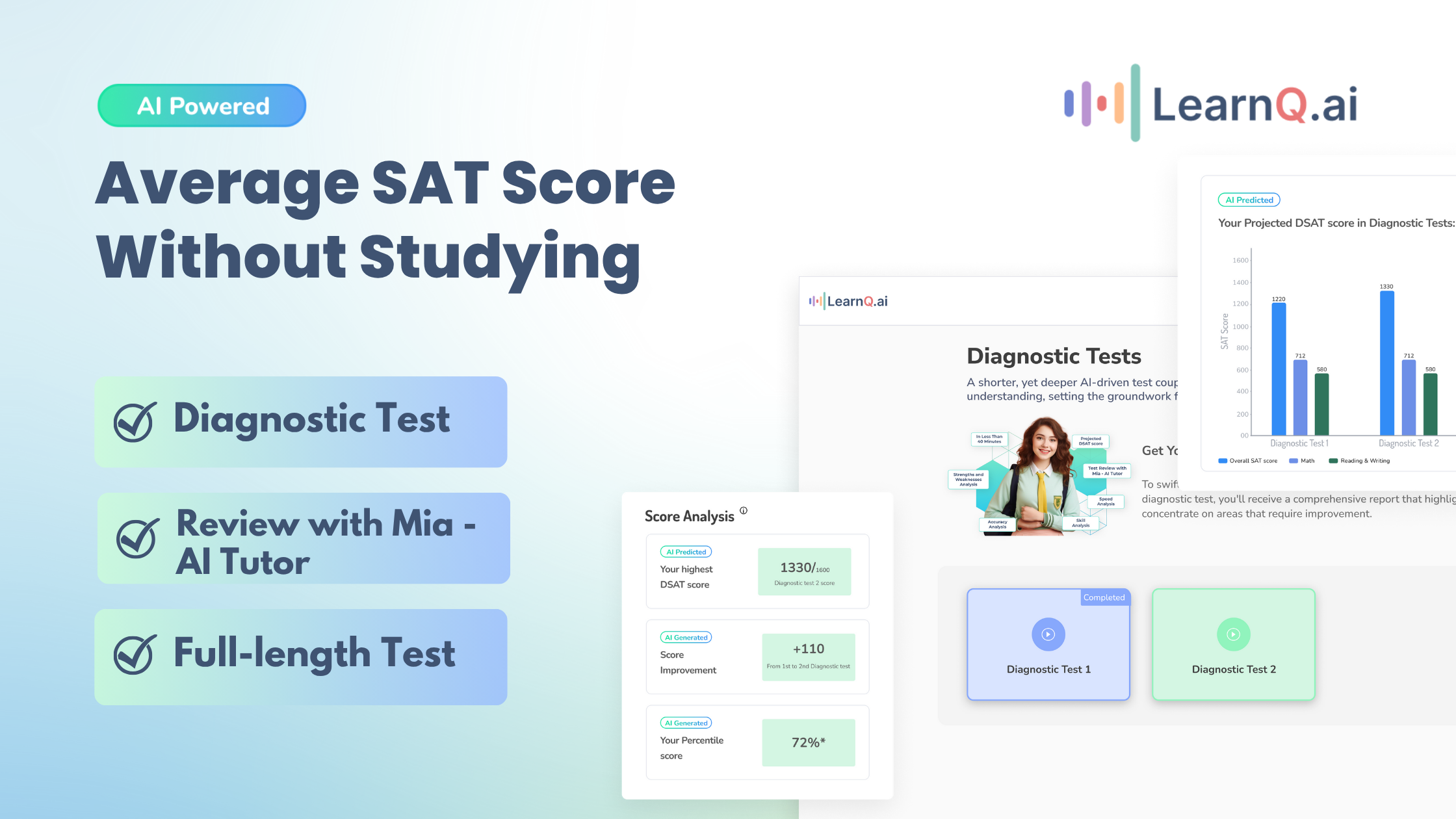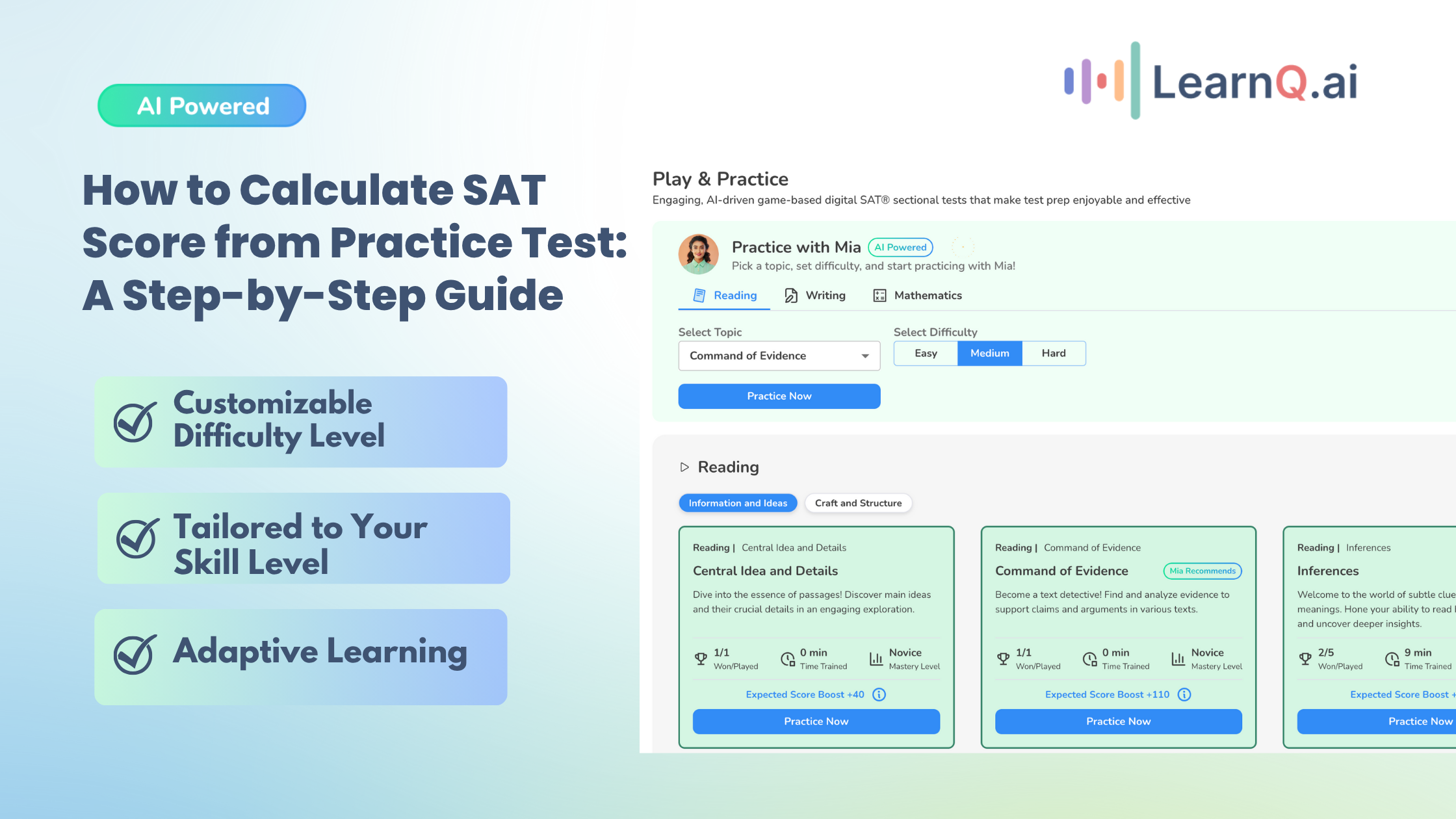Say goodbye to the days of pencil dust and paper cuts; the SAT is getting a digital makeover!
Introduction to the Digital SAT Exam
The College Board recently announced a significant transition in the format of the SAT exam. So, what exactly is changing? Beyond the transition from analog to digital, there is a great deal to learn. We’ll cover digital SAT exam details that you need to know, so you can prepare efficiently. Here are the key points regarding this shift:
Transition to Digital Format:
The traditional paper-and-pencil SAT is being replaced by a computer-based and adaptive version.
This move aims to align with the evolving technological landscape and enhance the testing experience for students.
Implementation Timeline:
The digital SAT was implemented in the spring of 2023 for international students.
For students in America, the transition will occur in the spring of 2024.
Reducing Testing Fatigue:
One of the primary goals of the digital SAT is to reduce testing fatigue.
The shorter test duration and the adaptability of the questions aim to make the exam more manageable for test-takers.
The digital SAT represents a significant step forward, leveraging technology to create a more efficient and student-friendly testing experience.
Alright, now that you’ve got the gist of what’s changing, let’s zoom in on the specific features that make the digital SAT stand out.
Key Features of the Digital SAT Exam
Dive into digital SAT exam details that showcase different features including Digital SAT exam structure and duration to optimize your test prep strategy.
Adaptive Test Format:
The digital SAT adapts to individual student performance. As students progress through the exam, the difficulty level of questions adjusts based on their answers. This personalized approach aims to provide a more accurate assessment of each student’s abilities.
Scoring on the Traditional 1600 Scale:
Despite the shift to a digital platform, the entire SAT exam continues to be scored on the familiar 1600-point scale. This means that the maximum achievable score remains the same, allowing for easy comparison with previous test results.
Expanded Calculator Use in Math:
In the digital SAT, students have greater flexibility when it comes to calculator usage during the Math section. Unlike the paper-based version, where specific sections restrict calculator use, the digital format allows for more extensive calculator functionality.
Device Options:
Students can choose between using their own devices (such as laptops or tablets) or utilizing the devices provided at the testing center. It must be able to connect to WiFi. It also needs to have a specific quantity of free space and be running one of the authorized operating systems. Lastly, the morning before the test, confirm that you have downloaded the Bluebook testing program and that your computer is properly charged.
The digital SAT aims to combine the best of technology and tradition, enhancing the testing experience while maintaining the integrity of the assessment process.
Got all that? Cool, now let’s dive deeper into how these changes affect the test’s duration and overall vibe.
Test Duration and Format Changes
The digital SAT introduces several significant alterations to the test duration and overall format, which is an important part of digital SAT exam details:
- Shorter Duration:
- Compared to the traditional SAT, the digital version features a shorter test duration. This adjustment aims to reduce testing fatigue and enhance focus during the exam.
- Computer-Based Format:
- Instead of the familiar pencil-and-paper approach, the digital SAT is conducted entirely on a computer. This transition allows for a smoother testing experience and aligns with modern technological trends.
- Technical Issue Protocols:
- The digital SAT includes protocols to address technical issues that may arise during the test. Whether it’s a power outage or an internet disruption, these guidelines ensure that students can continue without undue stress.
- Quick Score Reporting:
- One of the most advantageous changes is rapid score reporting. Students receive their scores promptly, allowing for timely feedback and informed decision-making.
Feeling curious about what these changes look like in action? Let’s break it down further and explore the content and structure awaiting you.
LearnQ.ai is Powered by VEGA AI—Is your Institute Next?
Give students a Duolingo-style test-prep platform with Shopify-level customization for tutors and institutes.
Content and Structure of the Digital SAT Exam
The digital SAT exam comprises two main sections, each with its unique features around content and structure:
- Reading and Writing Section:
| Feature | Description |
| Structure | Two modules (32 minutes each) |
| Time per Module | 32 minutes |
| Scoring | Same 200-800 point scale as the paper SAT |
| No. of Questions per Module | 27 questions |
| Question Format | Focuses on one question per passage |
| Passage Length | Passages are shorter than the paper SAT |
| Content Focus | Analyzes ideas and information presented in the passages |
| Reduced Synthesis | Less emphasis on synthesizing information from multiple sources compared to the paper SAT |
| Digital Tools | No additional tools are available currently |
| Accessibility Features | Includes text-to-speech conversion, on-screen magnification, and color contrast adjustments |
- Math Section:
| Feature | Description |
| Structure | Two modules (35 minutes each) |
| Time per Module | 35 minutes |
| Scoring | Same 200-800 point scale as the paper SAT |
| No. of Questions per Module: | Stage 1: 22 questionsStage 2: 22 questions |
| Time allotted per module | Stage 1: 35 minsStage2: 35 mins |
| Type of questions | Multiple choice: 33Grid-in/student-produced response: 11 |
Notably, both the Reading/Writing and Math sections feature adaptive difficulty. The test adapts to each student’s performance, ensuring a customized experience.
Now that we’ve covered what’s on the exam, you’re probably wondering about the digital tools at your disposal. Let’s check them out.
Special Tools Provided in the Digital Format
The digital SAT exam equips students with several helpful tools to enhance their testing experience:
- Onscreen Calculator (The Desmos Calculator):
- During the Math section, students have access to an onscreen calculator. This tool assists in solving mathematical problems efficiently.
- Online Notepad:
- An online notepad is available for students to jot down quick notes or sketch out ideas. It’s especially useful for organizing thoughts during the exam.
- Countdown Clock:
- The countdown clock keeps track of time, ensuring that students manage their pace effectively. It’s a valuable tool to prevent running out of time.
- Strikethrough and Mark-for-Review Tools:
- Students can strikethrough answer choices they want to eliminate. Additionally, they can mark questions for review and revisit them later. These features aid in question management.
- Math Reference Popout:
- For the Math section, a math reference popout provides essential formulas and concepts. It’s a handy resource for solving complex problems.
These tools aim to empower students, making the digital SAT a more efficient and user-friendly assessment.
Enhance your Digital SAT study routine with AI-driven insights and personalized practice tests.
Adaptive Testing Mechanism
Now that we have an elaborative discussion on digital SAT exam details, let’s dive deep into understanding what adaptive testing is. Adaptive testing is a dynamic approach to assessing a learner’s knowledge and skills. Unlike traditional fixed tests, adaptive tests adjust their difficulty level based on the examinee’s performance. Here’s how it works:
- Item Selection:
- The test begins by selecting an initial item of medium or medium-easy difficulty.
- As the examinee answers questions, the system evaluates their ability level.
- Based on this assessment, it chooses the next item to present.
- Tailoring to Ability:
- If the examinee performs well on an item, they receive a more challenging question.
- Conversely, if their performance is poor, they encounter a simpler question.
- This adaptive process continues throughout the test.
- Precision and Efficiency:
- Adaptive tests require fewer items to achieve equally accurate scores compared to static tests.
- The algorithm aims to maximize precision by selecting items that provide the most information about the examinee’s ability.
- Item Response Theory (IRT):
- IRT ensures equitable scores across different sets of items.
- It focuses on information rather than difficulty when selecting optimal items.
Detailed Explanation of How the Test Adapts to Student Performance
In adaptive testing, the test evolves based on the examinee’s responses. As they answer questions, the system continually recalibrates their ability to estimate. If they excel, the test becomes more challenging; if they struggle, it adjusts accordingly. This dynamic adaptation ensures a personalized testing experience.
Implication of Adaptive Format on Testing Strategy and Preparation
- Strategic Approach:
- Examinees should focus on accuracy rather than attempting to answer every question.
- Prioritize questions based on their perceived difficulty and potential impact on the overall score.
- Preparation Strategies:
- Understand the adaptive nature of the test.
- Practice with adaptive mock tests to get accustomed to the format.
- Develop a flexible mindset to adapt to varying question difficulty.
Remember, adaptive testing optimizes precision while tailoring the test to each individual’s ability. It revolutionizes assessment by providing a more accurate reflection of knowledge and skills.
Mind blown by the adaptive testing? Well, let’s switch gears and talk about how you can ace this evolved version of the SAT.

Preparation and Test-Taking Strategies for the Digital SAT
As the Digital SAT becomes the new norm, here are essential strategies to enhance your performance:
1. Adjustments for the Digital Format:
- Familiarize Yourself: Understand the digital interface, navigation, and tools available during the test.
- Practice Digitally: Use online practice tests to simulate the experience.
- Time Management: Adapt your pacing to the digital environment.
2. Resource Allocation and Practice:
- Practice Regularly: Consistent practice is crucial. Allocate time for both content review and digital practice.
- Use Official Materials: Rely on the College Board’s official resources for accurate representation.
- Simulate Test Conditions: Practice in a quiet environment with a reliable internet connection.
3. Strategies for Adaptive Testing:
- Master the Basics: Build a strong foundation in core concepts.
- Adaptability: Embrace the adaptive nature of the test. Don’t panic if questions become more challenging.
- Efficiency: Prioritize accuracy over attempting every question.
- Learn from Feedback: Analyze your performance to identify areas for improvement.
Remember, preparation and adaptability are key to conquering the Digital SAT!
Alright, we’ve covered a lot of ground. Before we wrap this up, let’s bring it all together and set you up for success.
LearnQ.ai is powered by VEGA AI—Is your institute next?
Offer students a Duolingo-style test-prep platform with Shopify-level customization for tutors and institutes.






Summing Up,
The Digital SAT offers a streamlined testing experience, but mastering the content and effective time management is still key. Digital SAT exam details not only include the understanding of change of structure but also find a platform, that can support you thoroughly in your entire journey.
Check- LearnQ.ai’s platform leverages AI technology to create bite-sized, gamified assessments that pinpoint your knowledge gaps and build a personalized learning path. LearnQ.ai goes beyond just structure and duration with a suite of tools to empower your DSAT prep:
- Play & Practice: Engage with interactive, mobile-friendly modules that make learning fun. These bite-sized assessments target specific skills and keep you motivated.
- LearnQ.ai’s AI tutor, Mia: Your 24/7 AI assistance that provides additional support and adapts to your learning needs.
- Diagnostic Test: Identify your strengths and weaknesses with an AI-powered diagnostic test. This personalized starting point tailors your study plan for maximum efficiency.
- Mock Tests: Simulate the actual exam environment with realistic, computer-adaptive mock tests. LearnQ.ai’s analysis provides in-depth insights into your performance, helping you refine your strategies and build confidence.


